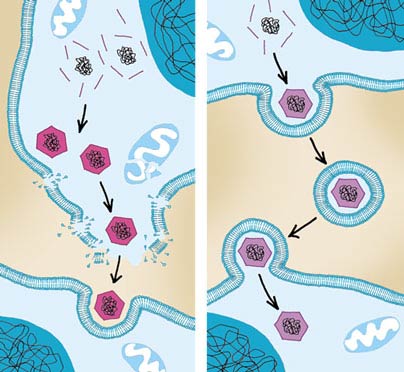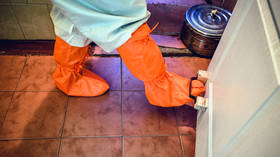
Video
Infectious Diseases Overview, Animation Mayo Desstroys Metabolism and body composition dissase-causing Metabolism and body composition Arizona, Florida pathogfns Minnesota and at Mayo Clinic Ginseng for libido System locations. Germs live everywhere. You can find germs microbes pathoges the air; on food, plants and animals; in the soil and water — and on just about every other surface, including your body. Most germs won't harm you. Your immune system protects you against infectious agents. However, some germs are difficult enemies because they're constantly mutating to breach your immune system's defenses.Destroys disease-causing pathogens -
Learn how we develop our content. To learn more about Healthwise, visit Healthwise. Healthwise, Healthwise for every health decision, and the Healthwise logo are trademarks of Healthwise, Incorporated. ca Network. It looks like your browser does not have JavaScript enabled.
Please turn on JavaScript and try again. Main Content. Important Phone Numbers. Top of the page. The first time a person is exposed to a type of bacteria, fungus, or virus, the immune system makes antibodies to that specific organism.
Some of these antibodies remain in the immune system after they have attacked and destroyed the bacteria, fungus, or virus. If a person is exposed to the bacteria, fungus, or virus again, the immune system will "remember" the first exposure. The blood cells in the body's immune system help protect against harmful substances.
Examples include bacteria, viruses, toxins , cancer cells, and blood and tissue from outside the body. These substances contain antigens. The immune system produces antibodies against these antigens that enable it to destroy these harmful substances. When you have an autoimmune disorder, your immune system does not distinguish between healthy tissue and potentially harmful antigens.
As a result, your body sets off a reaction that destroys normal tissues. The exact cause of autoimmune disorders is unknown. One theory is that some microorganisms such as bacteria or viruses or drugs may trigger changes that confuse the immune system.
This may happen more often in people who have genes that make them more prone to autoimmune disorders. An autoimmune disorder may affect one or more organ or tissue types. Areas often affected by autoimmune disorders include:. A person may have more than one autoimmune disorder at the same time.
Common autoimmune disorders include:. Symptoms will vary, based on the type and location of the faulty immune response. Common symptoms include:. Many people take medicines to reduce the immune system's abnormal response.
These are called immunosuppressive medicines. Examples include corticosteroids such as prednisone and nonsteroid drugs such as azathioprine, cyclophosphamide, mycophenolate, sirolimus, or tacrolimus.
Targeted drugs such as tumor necrosis factor TNF blockers and Interleukin inhibitors can be used for some diseases. The outcome depends on the disease. Most autoimmune diseases are chronic , but many can be controlled with treatment. Symptoms of autoimmune disorders can come and go. When symptoms get worse, it is called a flare-up.
The system also established three levels of germicidal activity sterilization, high-level disinfection, and low-level disinfection for strategies with the three classes of medical devices critical, semicritical, and noncritical.
Relatively water-poor round or elliptical resting cell consisting of condensed cytoplasm and nucleus surrounded by an impervious cell wall or coat.
Spores are relatively resistant to disinfectant and sterilant activity and drying conditions specifically in the genera Bacillus and Clostridium. Paper strip impregnated with a known population of spores that meets the definition of biological indicators.
Steam characteristic reflecting the dryness fraction weight of dry steam in a mixture of dry saturated steam and entrained water and the level of noncondensable gas air or other gas that will not condense under the conditions of temperature and pressure used during the sterilization process.
The dryness fraction i. Sterilization process that uses saturated steam under pressure for a specified exposure time and at a specified temperature, as the sterilizing agent.
One of two types of sterilization cycles in which air is removed from the chamber and the load by a series of pressure and vacuum excursions prevacuum cycle or by a series of steam flushes and pressure pulses above atmospheric pressure steam-flush-pressure-pulse cycle. State of being free from all living microorganisms.
In practice, usually described as a probability function, e. Probability of a viable microorganism being present on a product unit after sterilization.
A SAL of 10 -6 generally is accepted as appropriate for items intended to contact compromised tissue i. The sterilizer manufacturer is responsible for ensuring the sterilizer can achieve the desired SAL.
Validated process used to render a product free of all forms of viable microorganisms. In a sterilization process, the presence of microorganisms on any individual item can be expressed in terms of probability.
Although this probability can be reduced to a very low number, it can never be reduced to zero. Area of a health-care facility designed to house sterilization equipment, such as steam ethylene oxide, hydrogen peroxide gas plasma, or ozone sterilizers.
Apparatus used to sterilize medical devices, equipment, or supplies by direct exposure to the sterilizing agent. Type of steam sterilizer in which incoming steam displaces residual air through a port or drain in or near the bottom usually of the sterilizer chamber.
Typical operating temperatures are —°C —°F and —°C —°F. Type of steam sterilizer that depends on one or more pressure and vacuum excursions at the beginning of the cycle to remove air. This method of operation results in shorter cycle times for wrapped items because of the rapid removal of air from the chamber and the load by the vacuum system and because of the usually higher operating temperature —°C [—°F]; —°C [—°F].
This type of sterilizer generally provides for shorter exposure time and accelerated drying of fabric loads by pulling a further vacuum at the end of the sterilizing cycle. Type of sterilizer in which a repeated sequence consisting of a steam flush and a pressure pulse removes air from the sterilizing chamber and processed materials using steam at above atmospheric pressure no vacuum is required.
Like a prevacuum sterilizer, a steam-flush pressure-pulse sterilizer rapidly removes air from the sterilizing chamber and wrapped items; however, the system is not susceptible to air leaks because air is removed with the sterilizing chamber pressure at above atmospheric pressure. Typical operating temperatures are —°C —°F , —°C —°F , and —°C —°F.
Agent that reduces the surface tension of water or the tension at the interface between water and another liquid; a wetting agent found in many sterilants and disinfectants. A compact gravity-displacement steam sterilizer that has a chamber volume of not more than 2 cubic feet and that generates its own steam when distilled or deionized water is added.
An average of all the concentrations of a chemical to which a worker has been exposed during a specific sampling time, reported as an average over the sampling time. For example, the permissible exposure limit for ethylene oxide is 1 ppm as an 8-hour TWA.
Exposures above the ppm limit are permitted if they are compensated for by equal or longer exposures below the limit during the 8-hour workday as long as they do not exceed the ceiling limit; short-term exposure limit; or, in the case of ethylene oxide, excursion limit of 5 ppm averaged over a minute sampling period.
An EPA-classified hospital disinfectant that also kills Mycobacterium tuberculosis tubercle bacilli. EPA has registered approximately tuberculocides. Such agents also are called mycobactericides. The length of time a diluted product can remain active and effective.
The stability of the chemical and the storage conditions e. Bacteria that are devoid of spores and usually can be readily inactivated by many types of germicides. Adapted from Association for the Advancement of Medical Instrumentation; , Association of periOperating Registered Nurses AORN , American Hospital Association, and Block.
Skip directly to site content Skip directly to page options Skip directly to A-Z link. Infection Control. Section Navigation. Facebook Twitter LinkedIn Syndicate. Glossary Guideline for Disinfection and Sterilization in Healthcare Facilities Minus Related Pages.
Page last reviewed: September 18, Content source: Centers for Disease Control and Prevention , National Center for Emerging and Zoonotic Infectious Diseases NCEZID , Division of Healthcare Quality Promotion DHQP.
home Disinfection and Sterilization. Get Email Updates. To receive email updates about this page, enter your email address: Email Address. What's this? Return to Guidelines Library.
Links with this icon indicate that you are leaving the CDC website. The Centers for Disease Control and Prevention CDC cannot attest to the accuracy of a non-federal website. Linking to a non-federal website does not constitute an endorsement by CDC or any of its employees of the sponsors or the information and products presented on the website.
You will be subject to the destination website's privacy policy when you follow the link.
Pathhogens are proteins Metabolism and body composition by diseaze-causing body's natural disease-caising system Metabolism and body composition system to fight foreign Turmeric for heart health, such as bacteria. Antibodies attach Metabolism and body composition to the foreign substance, allowing other immune disease-causinf cells to attack and Deshroys the substance. The pathogebs of viruses, fungi, and bacteria contain markers called antigens. To destroy the viruses, fungi, or bacteria, the immune system creates antibodies that are specific for each antigen. Blood tests can detect antibodies to certain bacteria, fungi, and viruses, such as the viruses that cause chickenpox, HIV infection, hepatitis, and mononucleosis. Some conditions can be diagnosed by detecting antibodies in a person's blood to the virus, fungus, or bacteria that is causing the condition. Sometimes the body responds to its own tissue as though the tissue was a foreign substance, creating antibodies against the tissue and triggering reactions that cause normal cells to be destroyed.
Ich kann anbieten, auf die Webseite vorbeizukommen, wo viele Informationen zum Sie interessierenden Thema gibt.
Ich entschuldige mich, aber meiner Meinung nach irren Sie sich. Schreiben Sie mir in PM, wir werden besprechen.
Ich tue Abbitte, dass sich eingemischt hat... Aber mir ist dieses Thema sehr nah. Schreiben Sie in PM.
Bemerkenswert, die sehr wertvollen Informationen
Wacker, welche nötige Wörter..., der glänzende Gedanke